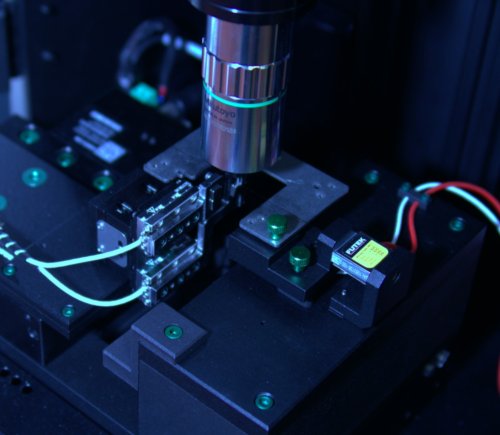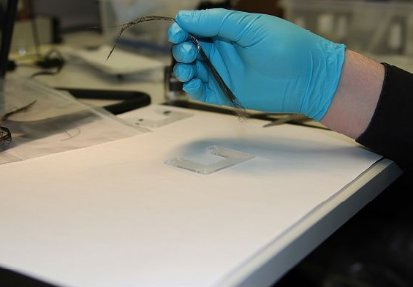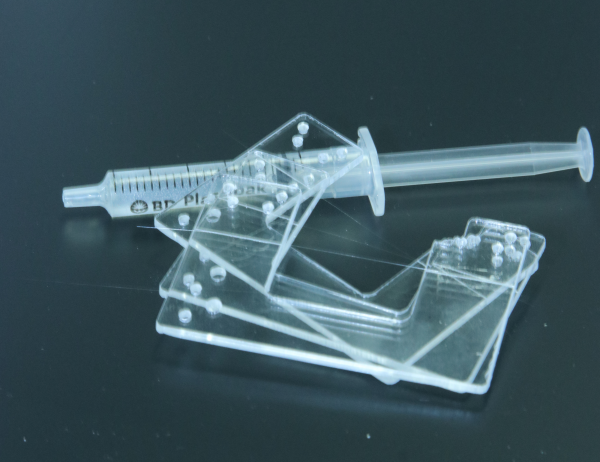FIBROBond is based on a modified version of the original Microbond method developed by B. Miller, P. Muri, and L. Rebenfeld (1987).
This method allows precise measurement of interfacial properties between two materials — ideal for studying surface treatments or material compatibility.
Fibrobotics’ version automates the entire process, making it up to 100× faster than manual testing.


Microbond testing always starts with the sample.
A single filament is separated from a row, tow, or fibre bundle.
This filament is then glued to a sample frame — available in different sizes depending on fibre length and preparation.
Once filaments are mounted, 3–5 frames are typically prepared per sample.
A small amount (~1 drop or 50 mg) of resin or polymer is placed into the FIBRODrop device.
Using a patented method, FIBRODrop creates controlled droplets directly on the filament — with precise control over size and placement.

Testing with FIBROBond is fast and intuitive.
Automated features allow users to measure ~30 droplets in just 20 minutes.
Measuring various droplet sizes improves statistical reliability.
Each test typically covers a 15 mm section of the filament.
Each measured frame contains approximately 30 droplets, which are plotted as force vs. area.
A linear regression is applied to extract the slope — this represents the IFSS (Interfacial Shear Strength) of the sample.
Analyzing multiple parallel samples helps reveal variation in fibre behavior and improves understanding of overall interface properties.

If you are hesitant if your case is suitable for microbond measurements, check our use cases for inspiration and ideas for testing.
We offer fast measurement services for microbond testing. We only need 30 cm of your tow or roving and a small amount of resin(s), and you will get your results in a few weeks.

